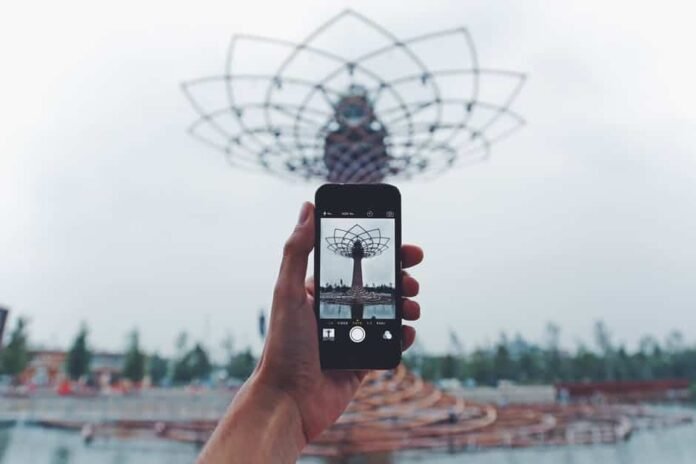Smartphone cameras are the most common cameras utilized today, as they are easy to carry around. Pro DSLRs cameras may offer excellent picture quality but that doesn’t mean we underestimate the capabilities of a smartphone camera. By changing some settings, angles and light, combined with editing apps and tools you can manage to be better at your smartphone photography.
Person Taking Photo of Tower
To enable you to take the best photographs with your phone, I have compiled 5 simple tips which will help you have the capacity to create some amazing shots from a limited however constantly upgrading camera platform.
Tip#1: Know Your Auto Mode
Knowing how the programmed shooting mode on your smartphone camera works can significantly enable you to take great photographs. Set aside the opportunity to realize when it utilizes high ISOs, when it utilizes long screen speeds, and alter how you take photographs likewise. It particularly knows when the auto mode is needed, as you would then be able to choose to nullify the default settings where suitable.
Tip#2: Utilize Good Posture
A key strategy to avoid vague, low quality and blurry pictures is to know how to hold a smartphone camera steadily. Holding your arms outstretched or far from your body can be a bit difficult while capturing. On the off chance that you need proper steadiness, it is better to get a tripod that you can connect your smartphone with. Tripods and monopods will always support you in taking fabulous shots effortlessly.
Tip#3: Never Digitally Zoom
It is best to never zoom with a smartphone camera. Numerous phones, including the iPhone X and Samsung Galaxy Note 8, incorporate auxiliary cameras that give 2x optical zoom. There’s no reason you shouldn’t utilize those cameras, as they give an optical zoom without the loss of picture quality.
The problem with zooming is that it doesn’t enable you to reframe the picture afterwards: you’re basically losing information and decreasing quality with no chance in reverse. Indeed, the picture will seem to demonstrate a picture of your subject closely. What you should do here is that you capture the image without zooming it and crop it later. Taking the photograph without zooming gives adaptability and the capacity to edit the image later.
Tip#4: Take Multiple Shots
There is a lot of capacity in your smartphone, so for each shot that you need to completely nail, it helps you capturing photos with hardly a pause in between. While shooting dynamic or quick moving items –, for example, individuals, pets, autos, and so on – taking numerous photographs will enable you to pick the absolute best later, without agonizing over getting that one ideal picture in the first shot. You can use camera features like panoramas and burst modes as well.
Tip#5: Post-processing is Important
The confusion that regularly stops a photograph caught with a smartphone from looking really marvelous is the post-editing stage. It’s anything but difficult to settle this: you can fix the photograph in nice editing software on your PC, as Light room, or even utilize an application on the gadget itself and start playing around. In the wake of moving a couple of sliders and ticking a couple of boxes, the outcomes may surprise you and your friends.






